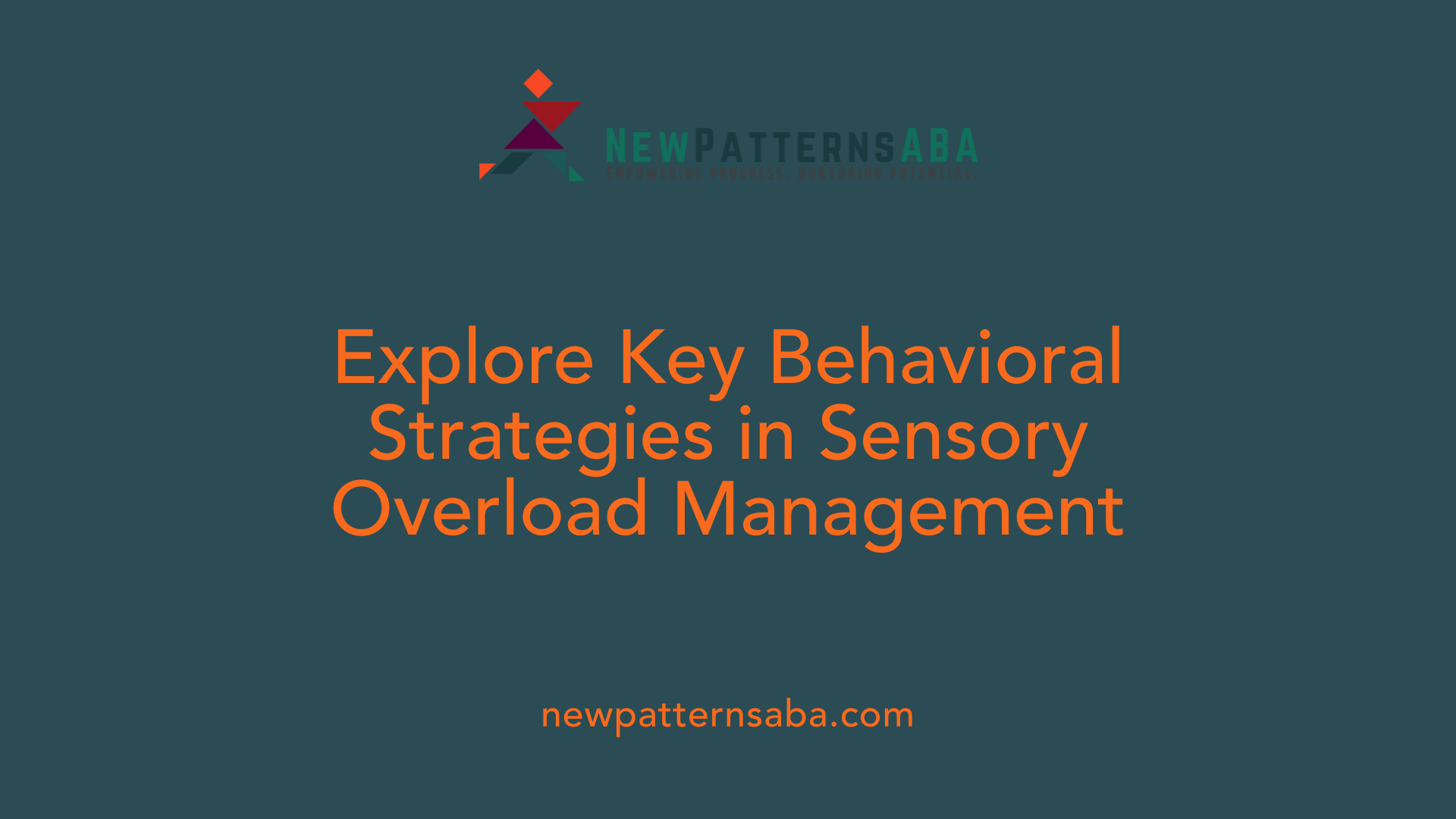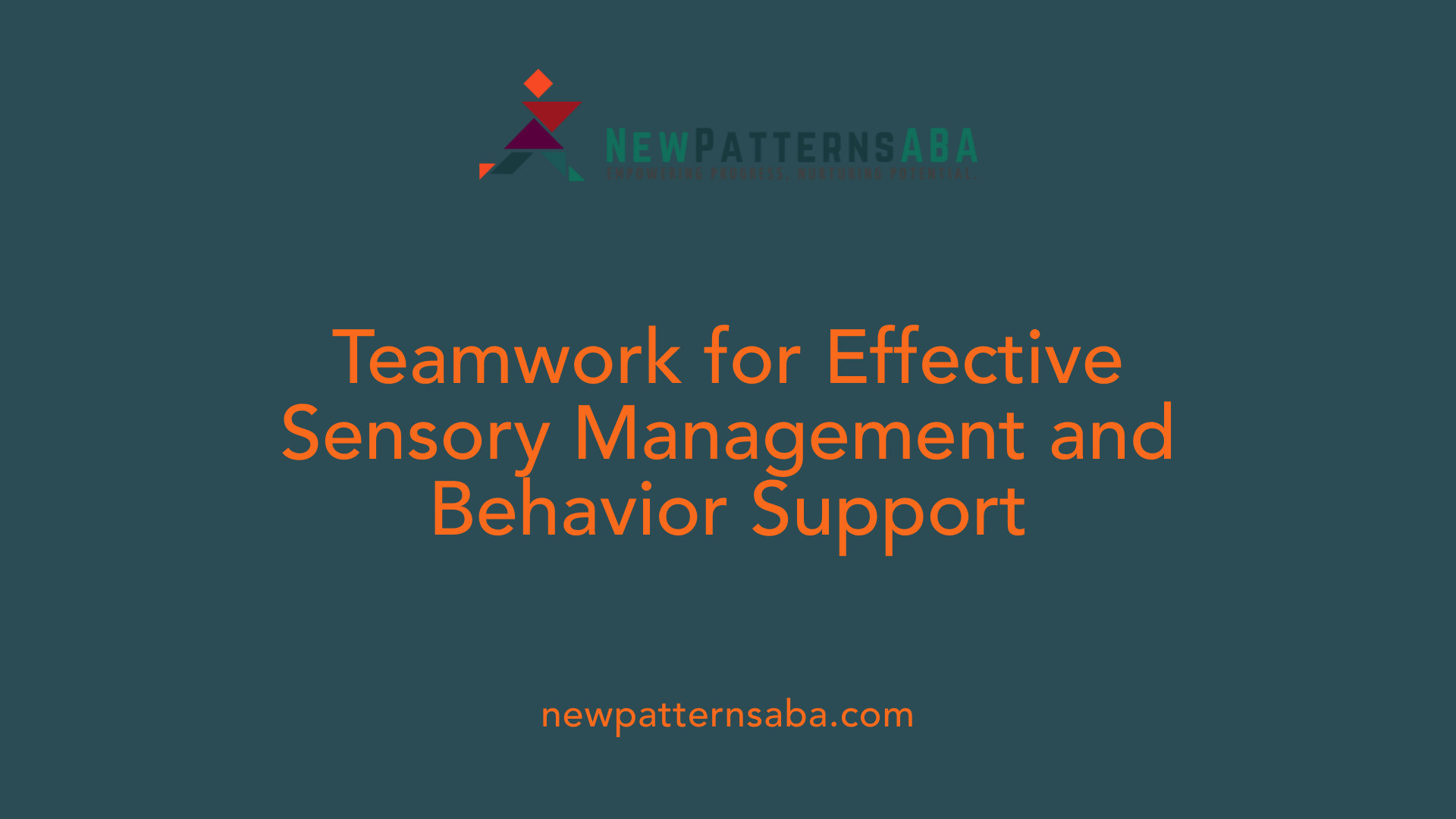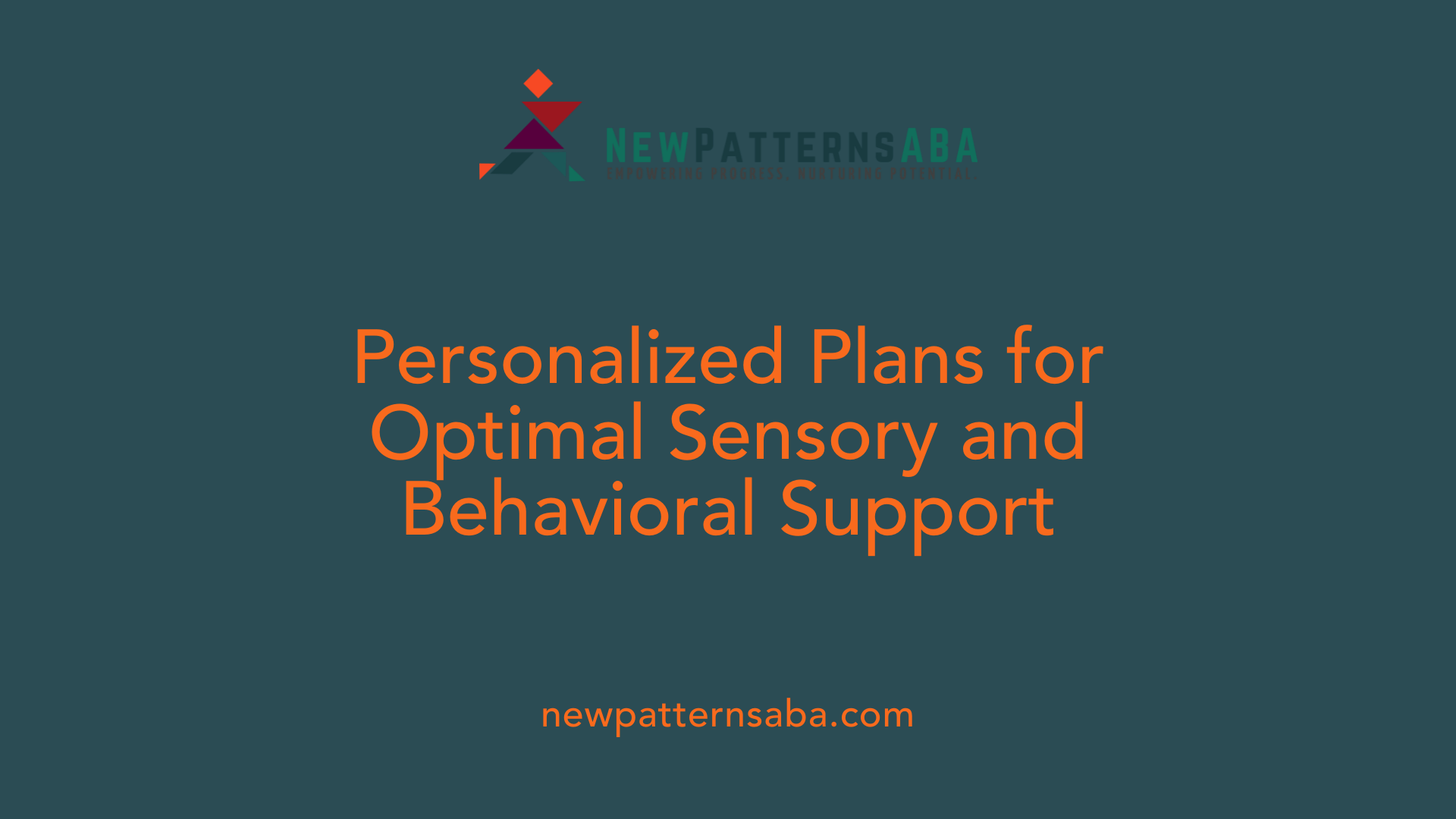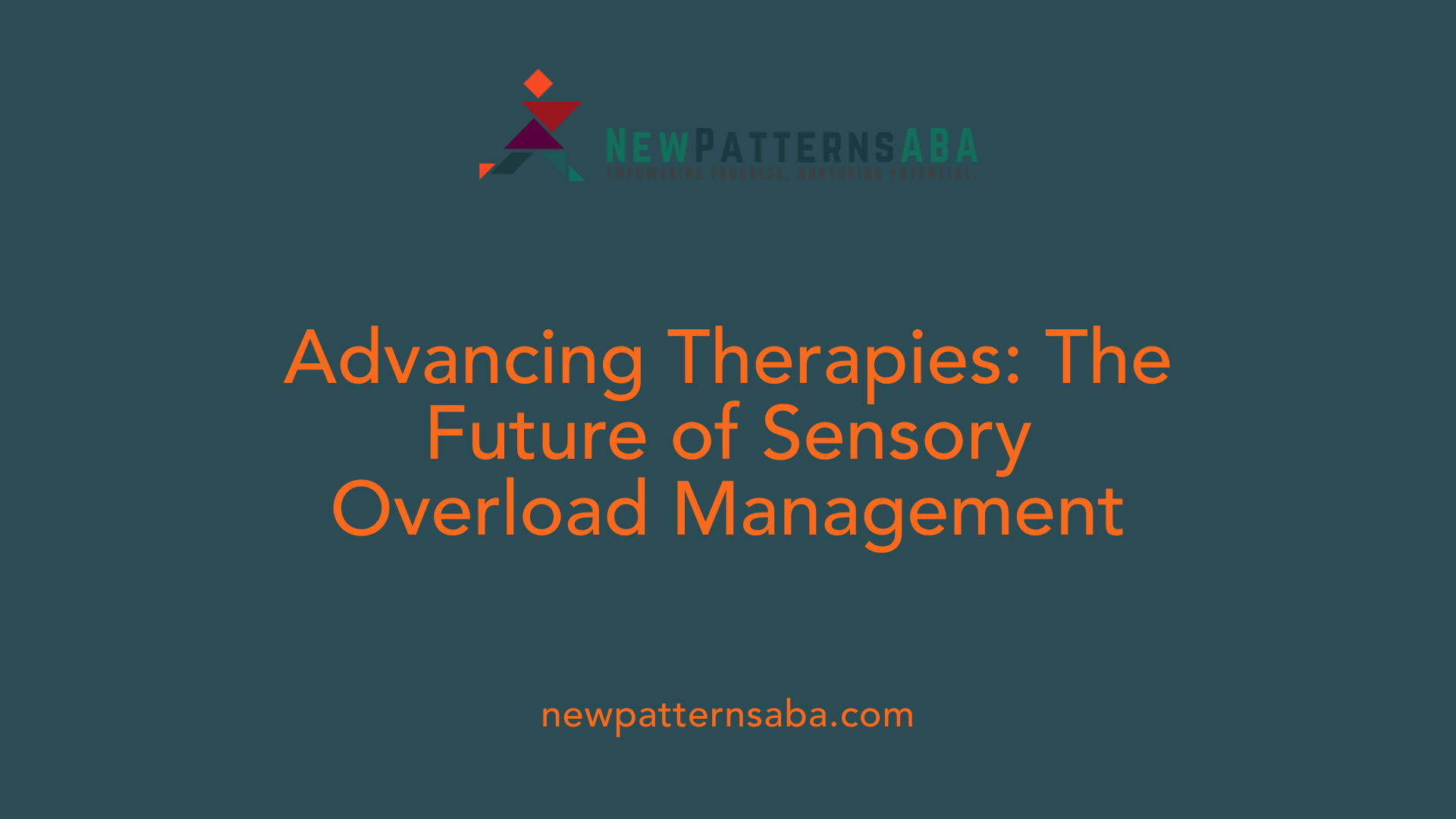Understanding Sensory Overload in Autism Education
Sensory overload is a common challenge faced by students with autism spectrum disorder (ASD) in classroom environments. The intense stimuli from noise, lighting, and bustling activity can disrupt learning and behavior, making it essential for educators and caregivers to implement effective strategies. This article explores the role of behavioral analysis therapies, particularly Applied Behavior Analysis (ABA), in managing sensory overload and enhancing educational outcomes for students with autism. It highlights key approaches, professional roles, and evidence-based practices crucial for creating supportive, individualized learning spaces.
What is Applied Behavior Analysis (ABA) Therapy and Its Role in Autism Classrooms?
Definition and principles of ABA therapy
Applied Behavior Analysis (ABA) therapy is a scientifically grounded approach that focuses on understanding and modifying behavior through systematic techniques. It relies on concepts such as positive reinforcement, behavior chaining, prompting, and extinction to encourage meaningful behavioral changes in individuals with autism.
Use of ABA to address behaviors related to sensory overload
In autism classrooms, ABA therapy helps address behaviors stemming from sensory overload. By carefully analyzing antecedents and consequences, therapists identify triggers and design interventions to reduce distressing behaviors, supporting students to better manage sensory challenges.
Individualization and data-driven methods
ABA programs are highly individualized, with goals tailored to each student's unique needs. Continuous data collection and analysis ensure that interventions remain effective, allowing for adjustments based on observed progress. This personalized, evidence-based approach enhances learning and behavior outcomes.
Role of positive reinforcement and behavior modification techniques
Positive reinforcement is central to ABA, used to encourage desired behaviors by rewarding students when they demonstrate target skills. Behavior modification techniques help reduce problematic behaviors and teach replacement skills in a structured manner. These strategies foster skill development and improve classroom participation for students with autism.
Common Behavioral Analysis Approaches Applied in Managing Sensory Overload

What Are Common Approaches Used in Autism Therapy Focusing on Behavioral Analysis?
Applied Behavior Analysis (ABA) is a widely used framework in autism therapy, especially for managing sensory overload. It incorporates techniques such as discrete trial training (DTT), prompting, and reinforcement to encourage positive behaviors and reduce sensory-related challenges.
Techniques Such as Discrete Trial Training, Prompting, and Reinforcement
Discrete Trial Training breaks down skills into small, manageable steps, teaching one at a time with clear prompts and reinforcement. Prompting guides the individual toward the correct response, which is then reinforced with rewards like praise or tokens, helping them learn desired behaviors in a structured way.
Use of the ABC Model in Intervention
The ABC model (Antecedent, Behavior, Consequence) is central to behavior analysis, helping therapists understand what triggers sensory overload (Antecedent), the individual's reaction (Behavior), and the results that reinforce or diminish that reaction (Consequence). This analysis allows for personalized interventions that minimize triggers and adjust consequences to encourage coping strategies.
Visual Supports and Structured Routines to Minimize Sensory Triggers
Visual supports such as picture schedules and social stories help individuals anticipate daily activities, reducing anxiety and sensory overload. Structured routines create predictability, which minimizes unexpected sensory input that could cause distress.
Supplementary Methods Enhancing Social Engagement and Generalization
Beyond core ABA methods, approaches like Pivotal Response Training focus on motivation and social initiation, while social stories and social skills training help individuals practice and generalize appropriate responses to sensory and social demands across settings.
| Approach | Description | Purpose in Managing Sensory Overload |
|---|---|---|
| Discrete Trial Training (DTT) | Teaching skills in small, clear steps | Teaches coping behaviors through repetition and structure |
| Prompting and Reinforcement | Guiding responses and rewarding positive behavior | Encourages desired reactions to sensory input |
| ABC Model | Analyzing antecedents, behaviors, and consequences | Identifies triggers and effective interventions |
| Visual Supports and Routines | Using schedules and consistent routines | Reduces unexpected sensory triggers |
| Pivotal Response Training | Enhancing motivation and social initiation | Improves engagement and flexibility in sensory situations |
| Social Stories and Skills Training | Providing narratives and practice for social scenarios | Generalizes skills to real-world sensory challenges |
Understanding Sensory Overload: Impact on Behavior and Learning
How does sensory overload manifest in students with autism?
Sensory overload occurs when students with autism are exposed to more sensory input than their brains can process. They might react to bright lights, loud noises, or even tactile sensations with signs of distress such as covering their ears, avoiding eye contact, or showing repetitive movements.
What behavioral reactions are linked to overwhelming sensory stimuli?
Behavioral reactions may include irritability, anxiety, meltdowns, or withdrawal. These reactions are often the student's way of coping with the discomfort caused by excessive sensory input.
How does sensory overload impact attention, communication, and academic engagement?
Sensory overload can significantly reduce a student's ability to focus and engage in learning activities. It may hinder communication efforts and cause difficulty processing instructions, leading to lower academic participation and achievement.
Why is there a need for environmental adaptations?
To support students with autism, it's necessary to create calm and predictable learning environments. Adjustments such as reducing background noise, using soft lighting, and providing quiet spaces can help reduce sensory overload and promote better behavior and learning outcomes.
Role of Certified Professionals in Autism Behavioral Therapies
Who Typically Provides Autism-Focused Behavior Analysis Therapies?
Autism-focused behavior analysis therapies, such as Applied Behavior Analysis (ABA), are delivered by a range of trained specialists. These include Board Certified Behavior Analysts (BCBAs), behavior therapists, and other healthcare professionals experienced in behavioral interventions. These specialists often come from backgrounds in psychology, education, or related fields and hold advanced certifications to ensure expertise in designing and implementing therapy.
Training and Credentials Such as BCBA Certification
A critical credential for providers is the BCBA certification, which requires dedicated training and passing a rigorous exam. BCBAs are qualified to assess, plan, and oversee ABA therapy programs tailored to individuals on the autism spectrum. This training ensures providers apply evidence-based methods ethically and effectively, maintaining professional standards.
Collaboration with Educators and Families in Classroom Settings
Certified professionals work closely with educators and families to embed behavioral strategies into classroom environments. This collaboration supports consistency and generalization of skills, promotes positive behaviors, and ensures that therapy complements educational goals. By involving caregivers and teachers, therapists help create a supportive learning atmosphere that reinforces therapeutic gains.
Ensuring Quality and Ethical Delivery of Therapy
Maintaining quality involves constant monitoring of progress and adapting interventions as needed. Certified providers adhere to professional ethical guidelines which emphasize respect, consent, and individualized care. This commitment protects the rights of clients and promotes the highest therapeutic standards.
| Provider Type | Credentials & Training | Role in Therapy |
|---|---|---|
| Board Certified Behavior Analysts (BCBAs) | BCBA certification, advanced training in ABA | Lead therapy design, oversee programs, supervise therapists |
| Behavior Therapists | Training in behavioral intervention | Implement behavior plans under supervision |
| Educators | Teaching credentials, training in special ed | Collaborate in classroom integration |
Qualified certified professionals play an essential role in delivering effective, ethical autism behavioral therapies, ensuring interventions are customized and well-supported across settings.
Effectiveness of Behavioral Analysis Therapy in Addressing Sensory Issues
How effective is behavioral analysis therapy for individuals with autism?
Behavioral analysis therapy, especially Applied Behavior Analysis (ABA), is broadly recognized as an effective, evidence-based approach for individuals with autism. It works by analyzing how behaviors are shaped by the environment and uses techniques like positive reinforcement to encourage helpful behaviors such as communication, social interaction, and daily living skills. Equally important, it aims to reduce behaviors that may interfere with learning and safety.
Research supporting ABA's impact on communication and social engagement
Many studies highlight that intensive ABA therapy—typically between 25 to 40 hours per week conducted over one to three years—can significantly enhance communication skills and social engagement among children with autism. This method uses consistent practice and reinforcement to help children develop meaningful interactions with others, which often reduces isolation and frustration related to sensory processing difficulties.
Improvements in intellectual and adaptive functioning through therapy
ABA therapy not only improves social and communication abilities but also bolsters intellectual functioning and adaptive skills. Through structured learning environments, children often improve their problem-solving skills, increase their ability to cope with sensory information, and develop strategies for daily life. These improvements contribute to their independence and overall quality of life.
Challenges and critiques of ABA intensity and approach
Despite its benefits, ABA therapy faces some challenges. The required therapy intensity can be overwhelming for some children and families. Critics argue that ABA's structured approach may sometimes neglect individual preferences or emotional well-being if not tailored carefully. These concerns have led to calls for more flexible, child-centered adaptations of the therapy.
Importance of tailoring therapy to child well-being
Personalizing ABA approaches to fit each child's unique sensory needs and emotional state is essential. Therapists emphasize building on the child's strengths and interests, ensuring that therapy supports rather than stresses them. This tailored approach helps improve outcomes and maintains the child's motivation and engagement throughout treatment.
| Aspect | Description | Impact on Sensory Issues |
|---|---|---|
| Communication | Enhances verbal and non-verbal skills | Helps express sensory discomfort or needs |
| Social Engagement | Encourages interaction in varied settings | Reduces sensory-related social withdrawal |
| Intellectual Growth | Develops problem-solving and coping strategies | Improves management of sensory input |
| Therapy Intensity | High hours per week can be demanding | Requires balancing stimulation and rest |
| Individualization | Adapts methods to child's preferences and needs | Ensures therapy is supportive and not overwhelming |
Strategies for Creating Sensory-Friendly Autism Classrooms
Environmental Modifications to Reduce Sensory Overload
Creating a sensory-friendly classroom environment begins with thoughtful modifications to minimize sensory overload. This involves adjusting lighting by using natural light or soft, indirect lighting instead of harsh fluorescent bulbs. Reducing background noise through sound-absorbing materials like rugs and curtains helps decrease auditory distractions.
Seating arrangements should promote personal space and easy movement, allowing students to find comfortable positions. Additionally, eliminating clutter and using calming colors on walls can create a soothing atmosphere conducive to learning.
Use of Visual Schedules and Calming Spaces
Visual schedules provide predictable routines that reduce anxiety and help students anticipate what comes next. These schedules use pictures or symbols, making them accessible even to non-verbal learners.
Incorporating calming spaces within the classroom offers students a designated area to retreat when they feel overwhelmed. These spaces are equipped with soft cushions, weighted blankets, or noise-canceling headphones to create a safe sensory refuge.
Incorporating Sensory Breaks and Individualized Supports
Regularly scheduled sensory breaks allow students to regulate their sensory input throughout the school day. Activities like jumping on a mini-trampoline, using fidget tools, or deep-pressure exercises can be integrated according to each student's needs.
Individualized supports, planned with input from occupational therapists, ensure that accommodations like preferred seating or sensory tools target the unique challenges faced by each learner.
Integration of Behavioral Intervention Techniques in Classroom Design
Applying behavioral intervention methods, such as Applied Behavior Analysis (ABA), supports positive behaviors and learning. Classroom layout can encourage engagement by placing learning materials within easy reach and using clearly defined zones for activities.
Reinforcement strategies, including visual feedback and reward systems, are incorporated seamlessly into the classroom flow, promoting motivation and focus. Teacher and staff training ensures consistent implementation of these techniques.
Collaboration Between Educators, Therapists, and Families

Importance of teamwork in managing sensory overload
Managing sensory overload in students with autism requires a united approach. Educators, therapists, and families working together create a supportive environment tailored to each child's unique sensory needs. This teamwork helps identify triggers early and prevents overwhelming situations.
Sharing data and progress to adjust interventions
Open communication is crucial. Regularly sharing observational data and progress reports allows the team to monitor effectiveness and make timely adjustments to interventions. This ensures that strategies remain personalized and responsive to the student’s evolving needs.
Training educators in ABA-informed strategies
Educators benefit from ongoing training in Applied Behavior Analysis (ABA) techniques tailored to sensory challenges. This knowledge equips them with evidence-based tools to manage behaviors proactively and create sensory-friendly classrooms.
Family involvement to support consistency
Families play a critical role by reinforcing strategies at home, promoting consistency across settings. Educators and therapists can guide families on ways to support sensory regulation, creating a seamless support network that enhances the child's comfort and learning.
Together, this collaboration forms a comprehensive support system that significantly improves behavioral outcomes and educational experiences for students facing sensory overload.
Technology and Tools Supporting Sensory Regulation in Classrooms

How do assistive devices and apps align with behavioral strategies?
Assistive devices and apps are increasingly integrated into classrooms to support sensory regulation, especially for students with autism and sensory processing challenges. These technologies complement behavioral strategies by providing personalized sensory input and feedback. For example, apps can guide students through calming exercises or help teach self-regulation techniques, enhancing the effectiveness of traditional behavioral interventions.
What role do visual aids, timers, and noise-cancelling tools play?
Visual aids such as picture schedules and social stories help students anticipate changes and transitions, reducing anxiety. Timers assist in managing time during tasks or breaks, reinforcing routines and predictability. Noise-cancelling headphones and sound-blocking tools minimize distracting auditory input, allowing students to focus better in noisy classroom environments.
How is technology used for monitoring and data collection?
Monitoring and data collection technologies enable educators to track sensory triggers and responses in real time. Wearable devices can record physiological signals like heart rate or movement patterns, providing objective data about a student’s sensory state. This information helps teachers and therapists adjust interventions dynamically and make informed decisions to enhance sensory regulation strategies.
Developing Individualized Sensory and Behavioral Plans

How are sensory sensitivities and triggers assessed?
Assessing sensory sensitivities involves careful observation and collaboration with the individual and their caregivers. Tools such as sensory profiles and checklists help identify specific stimuli that may cause discomfort or distress, allowing educators to understand each student's unique sensory landscape.
What strategies are used to set measurable goals for behavioral improvements?
Setting goals requires that objectives be specific, observable, and measurable. For example, instead of a broad aim like "improve attention," a measurable goal would be "increase time spent on task from 5 to 15 minutes over four weeks." Clear benchmarks help track progress effectively.
How are ABA techniques incorporated for targeted skill development?
Applied Behavior Analysis (ABA) techniques are implemented by breaking down skills into manageable steps and using reinforcement strategies to encourage desired behaviors. Techniques such as discrete trial training or natural environment teaching can be tailored to each individual's learning style.
Why is continuous data collection crucial for refining plans?
Data collection provides ongoing feedback on the effectiveness of interventions. By documenting behaviors and responses systematically, educators can adjust plans dynamically, ensuring that strategies remain relevant and efficient in meeting the individual's needs.
| Step | Focus Area | Purpose |
|---|---|---|
| 1 | Sensory Assessment | Identify triggers and sensitivities |
| 2 | Goal Setting | Establish clear, measurable behavioral targets |
| 3 | ABA Implementation | Apply tailored teaching and reinforcement methods |
| 4 | Data Collection & Review | Monitor progress and adjust plans accordingly |
Future Directions in Managing Sensory Overload Through Behavioral Therapies

Emerging research and innovations in ABA and autism education
Contemporary research in Applied Behavior Analysis (ABA) continues to explore how sensory processing interventions can be refined to benefit individuals with autism. New approaches emphasize personalized sensory profiles that guide tailored therapy, moving beyond one-size-fits-all methods. Incorporating technology, like wearable sensors, provides real-time data to adjust interventions dynamically, enhancing effectiveness.
Balancing intensity of therapy with child-centered approaches
As behavioral therapies evolve, there is a growing awareness of the importance of balancing therapy intensity with respect for the child's comfort and preferences. This ensures that interventions do not lead to additional stress or resistance. Child-centered approaches prioritize collaboration with caregivers and the child, promoting engagement and autonomy while addressing sensory challenges.
Integration of multi-disciplinary methods
Future strategies increasingly favor integrating behavioral therapies with occupational therapy, speech therapy, and sensory integration techniques. This multi-disciplinary collaboration supports holistic treatment plans that address sensory processing alongside communication and motor skills, fostering more comprehensive development.
Potential policy and training improvements
Policy frameworks are gradually adapting to support wider access to updated behavioral therapies and specialized training for practitioners. Enhancements include incorporating sensory management modules in therapist education and advocating for insurance coverage of diverse therapeutic services. These changes aim to improve quality and availability of care for individuals facing sensory overload.
Enhancing Educational Outcomes Through Sensory and Behavioral Support
Effectively managing sensory overload in autism classrooms is integral to fostering an environment where students with autism can thrive academically and socially. Behavioral analysis therapies, particularly Applied Behavior Analysis, offer evidence-based frameworks and techniques that help educators and therapists tailor interventions to individual student needs. Collaboration among certified professionals, families, and school staff ensures consistent application of supports, while environmental modifications and technology further enhance student engagement and comfort. Continued research and innovation hold promise for refining these approaches to balance therapeutic intensity with holistic well-being, ultimately contributing to improved quality of life and learning success for students on the autism spectrum.
References
- Who Qualifies for ABA Therapy: Eligibility Guide
- How to Become an ABA Therapist - School of Education
- Applied Behavior Analysis (ABA)
- ABA Techniques: Strategies for Behavior Analysts - GSEP Blog
- ABA Therapy Examples, Definition & Techniques
- Treatment and Intervention for Autism Spectrum Disorder
- Applied Behavior Analysis (ABA)
- The Controversy Around ABA





